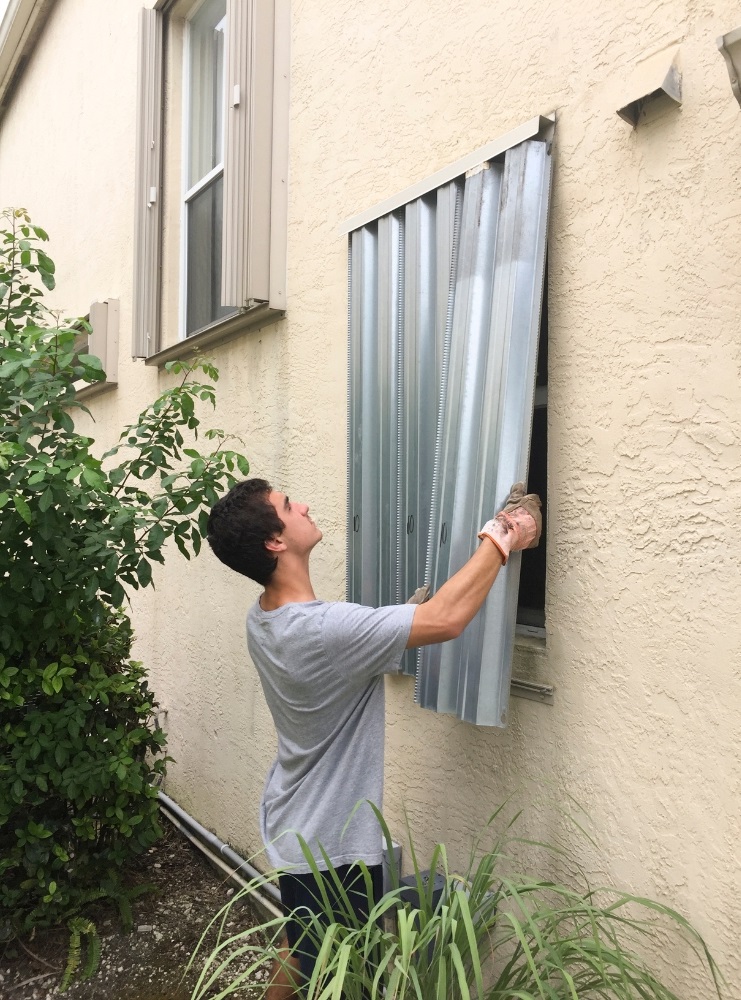This plan should be a dynamic document, adaptable to the evolving nature of Hurricane Debby's threat.
The evacuation plan is pivotal in ensuring safety during Hurricane Debby. It's not just about knowing when to leave but understanding the safest routes and destinations. Planning your evacuation meticulously, considering factors such as traffic flow and shelter locations, can significantly reduce the risks associated with a hurried departure.
Residing in low-lying areas demands an acute awareness of flood risks. Flood insurance emerges as a critical component of preparedness, offering a lifeline in the aftermath when the focus shifts to recovery. It's a protective measure that cannot be overlooked in the hurricane emergency planning process.
Stockpiling essential supplies forms the backbone of hurricane preparedness. Non-perishable food, water, medications, and batteries are among the essentials that should be readily available. This cache not only supports survival during the storm but also in the days following, when resources might be scarce.
A hurricane emergency kit, specifically designed for the challenges of hurricanes, is an indispensable tool. This kit should include first aid supplies, important documents, and items tailored to individual family members' needs, including pets. It's a portable lifeline, ensuring that basic needs are met during the chaos of evacuation and the storm itself.
Understanding the trajectory and potential impact of Hurricane Debby is essential. This involves closely monitoring weather forecasts and alerts from local authorities. Timely information can be the difference between being caught off guard and having the opportunity to implement your disaster plan effectively.
Lastly, community engagement and cooperation enhance the resilience of individuals and families. Sharing plans, resources, and information can help build a network of support, crucial during and after Hurricane Debby. Preparedness is not just an individual effort but a collective endeavor aimed at minimizing the impact on the entire community.
Comprehensive Preparation Guide for Hurricane Season
The Atlantic hurricane season brings a recurring threat that demands vigilance and preparedness. Understanding that a storm is expected at any point during this season underlines the importance of having a readiness plan in place. This plan should address the unique challenges posed by the season, emphasizing continuous monitoring and adaptation.
Preparation extends beyond the immediate timeframe, requiring attention to detail and foresight. The hurricane season's unpredictability necessitates a holistic approach to readiness, encompassing everything from securing property to ensuring that evacuation plans are understood and actionable. This comprehensive strategy is designed to mitigate risks and protect lives and assets.
Understanding the Threat: What to Expect from Hurricane Debby
Hurricane Debby's approach brings a spectrum of threats, from high winds to torrential rains. The storm is expected to impact several regions, necessitating a clear understanding of its potential severity. Anticipating the scope of Debby's impact is crucial for fine-tuning preparation efforts and ensuring that responses are proportionate to the threat level.
Forecasting plays a critical role in shaping expectations and guiding preparations. By analyzing the storm's projected path, individuals and communities can adjust their plans, focusing on the most pressing risks. This proactive stance is essential for minimizing the damage and disruption caused by Hurricane Debby.
Key Dates: Monitoring the Timeline of Hurricane Debby
Knowing the key dates associated with Hurricane Debby is fundamental to effective preparedness. The initial forecasts provide a rough timeline, but as the storm approaches, these predictions become more precise. Early awareness of these dates allows for timely actions, from securing property to finalizing evacuation plans.
As the storm progresses, updates to the timeline are crucial. These adjustments can indicate either an escalation in the threat level or a reduction in urgency. Staying informed through reliable sources ensures that preparations are both adequate and timely, aligning with the latest projections.
Implementing preparatory measures becomes more focused as the storm's arrival becomes imminent. This phase often involves securing loose outdoor items, finalizing evacuation plans, and ensuring communication lines are open and functional. It's a period marked by action, guided by the most up-to-date information available.
Post-storm, the timeline shifts focus to recovery and assessment. Key dates now include the resumption of services and the lifting of evacuation orders. Monitoring these dates is essential for a safe and orderly return to affected areas, signaling the transition from immediate survival to long-term recovery.
Zone Awareness: Identifying Your Risk and Evacuation Areas
Understanding one's location in relation to designated evacuation zones is a critical aspect of hurricane preparedness. Zone awareness facilitates informed decision-making, particularly when evacuation orders are issued. It's essential for individuals to know if they reside in a zone that is prone to flooding or other hurricane-related hazards.
Evacuation plans hinge on this awareness, guiding individuals and families to safety in a structured and efficient manner. Knowing the specific evacuation route and destination ahead of time can significantly reduce the stress and confusion associated with a hurricane evacuation. This knowledge ensures that residents can focus on securing their homes and loved ones, confident in their path to safety.
Evacuation Plans: Routes and Safety Measures
Creating an effective evacuation plan is a crucial step in preparing for Hurricane Debby. This process involves identifying safe routes out of your area, especially if you reside in low-lying areas prone to flooding. It's essential to map out multiple routes in advance, as some roads may become impassable due to the storm's effects. Local authorities often provide evacuation routes and updates, which should be incorporated into your plan. Ensuring your vehicle is fueled and ready for departure can make a significant difference in your ability to evacuate promptly.
When planning your evacuation, consider the needs of all family members, including pets. Designate a meeting point outside the danger zone where your family can regroup if separated. Additionally, it's wise to identify several potential destinations, such as a friend's home in a safe area, a family member's residence further inland, or a designated public shelter that accepts pets. Communicating these plans with all family members ahead of time ensures everyone knows what to do when the time comes to evacuate.
Adhering to safety measures during hurricane evacuation can greatly reduce the risks associated with traveling during such emergencies. Keep a battery-powered radio on hand to receive live updates and instructions from local emergency management, as conditions can change rapidly. Avoid driving through flooded roads and downed power lines, which are common hazards during hurricanes. Remember, water can be deeper than it appears, and just a few inches of moving water can disable a vehicle.
Finally, having a disaster plan that includes an evacuation plan tailored to the unique challenges of hurricanes is indispensable. This should involve securing your home, turning off utilities if instructed to do so, and locking doors before leaving. By preparing in advance, residents can ensure a safer evacuation process when faced with the threat of Hurricane Debby. The key is to remain calm, stay informed through reliable sources, and prioritize the safety of all individuals involved.
Essential Supplies for Hurricane Debby Readiness
Preparing for Tropical Storm Debby requires a well-thought-out plan, especially when considering the essential supplies. The National Weather Service often releases updates and advisories, emphasizing the need for an emergency kit that encompasses all basic necessities. Such a kit should include non-perishable food, water for several days, medications, flashlights, and batteries to combat power outages. Given the unpredictable nature of hurricanes, securing an ample supply can significantly mitigate the hardships faced during and after the storm.
Beyond the basic emergency kit, hurricane preparedness involves safeguarding one's home and surroundings against potential damage. Secure potted plants and trim tree limbs to reduce the risk of flying debris, which is a common hazard during storm surges. Interaction with your county emergency management agency can provide additional assistance and information tailored to your specific area. They can offer insights on community shelters, evacuation routes, and other local resources available for residents affected by Hurricane Debby in 2024. This proactive approach not only ensures personal safety but also aids in the broader community’s resilience against the storm.




